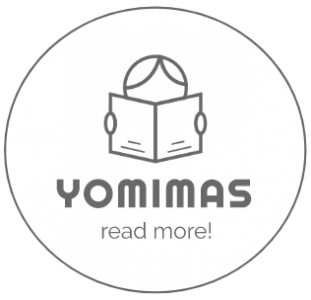Japanese is a language that is filled with its onomatopoeia. It simply cannot exist without the roughly 5,000 sound words that help us express the intensity or the tranquil of motion and emotion. The history of Japanese onomatopoeia dates back to the 712 A.D., when Kojiki, the oldest Japanese book, was written. You may have seen sound words in manga or even have heard of Marie Kondo say “Kyun!” a sound word expressing emotion of tokimeki or “Spark joy.” There are five different types of Japanese onomatopoeia:
- Giseigo – Animal and human sounds
- Giongo – Sounds made by inanimate object or nature
- Gitaigo – Words that describe condition or states
- Giyougo – Describe movements and motions
- Gijougo – Describe feelings
To a small child, one of the most exciting sound may be gatan-goton, a word that mimics the sound of a moving train. It’s still my favorite to this day (I adore trains). Illustrator and manga artist Mizumaru Anzai evolved a children’s storybook based on that sound alone, called Gatan-Goton Gatan-Goton. I had known of his work through the covers of Haruki Murakami’s novels he illustrated, but had no idea that he had written children’s books until I met this one.
The repetition of gatan-goton brings steady rhythm and excitement to the story. Familiar objects such as milk bottles, spoon, and fruits (even a cat and a mouse) board the train one after another, then exit altogether to meet a child at the dining table. It makes meal time fun for any child, especially if they like trains. Anzai’s simple but playful drawing style also adds to the relaxed feel of the story. When one learns Japanese, onomatopoeia is sure to be your best friend. Why not take the first step with this book?
Helpful Links:
“Japanese Onomatopoeia: The Definitive Guide” by Kristen Dexter, for Tofugu
“Japanese Onomatopoeia: The Made-up Words Convey Perfect Subtlety” by Hiroko Matsuyama, for Patternz
日本語はオノマトペで溢れています。漫画で読む動作の言葉から普段の会話で使うものまで、オノマトペなしでは会話が平べったく感じると言えるほど私たち日本人は音を頼りにしています。擬音語は「古事記」にも使われているくらい古くから存在していたそうです。最近流行ったオノマトペだと、近藤麻理恵さんのときめきを表す「きゅん」や、ラブコメドラマなどに対するリアクションの「キュンキュン」や「キュン死」といった表現ではないでしょうか。今でも進化する日本語のオノマトペは言語をとても面白く、常に新鮮に感じられます。
その中でも「がたんごとん」は子供から大人まで誰もがワクワクしたり、リラックスしたりする音の一つ。(電車好きの私の場合両方に当てはまります、笑。)安西水丸さんの絵本「がたんごとん」が愛される理由は、この言葉自体にあると言えるのではないでしょうか。村上春樹さんの本のカバーでもお馴染みの安西さんの絵はとってもシンプルかつハッキリしていて、赤ちゃんには好まれる絵だと思います。私は子供が2歳になるまでこの本に出会いませんでしたが、幸い娘も電車好きだったのですぐに愛着を持ったのだと思います。「がたんごとん」とリズミカルなセリフに合わせて乗車する哺乳瓶や果物。終着駅は子供の前。どこか遠くに行くわけでもなく、身近にあるもので作り上げた世界というのが何よりも可愛らしく感じます。そして個人的には「がたんごとん」がひらがなで表記されているのが嬉しいです。それはゆったり、急がず前を行く電車を想像させるからです。あなたにとって「がたんごとん」はどんな音ですか?
擬音語についてのリンク:




